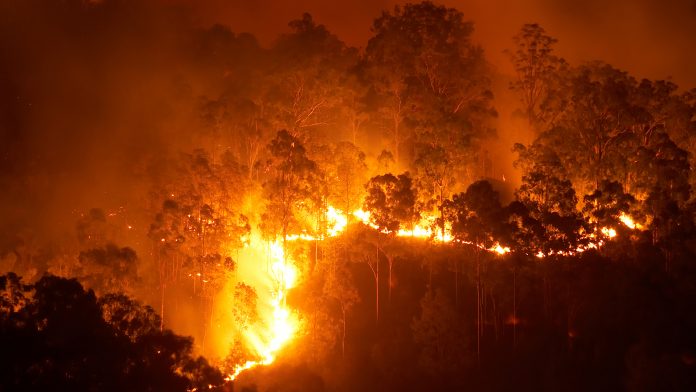A new study led by Oregon State University has found that changing temperatures in forests due to climate change will damage trees’ ability to cool their leaves and pull carbon dioxide from the atmosphere in warmer climates.
The new findings contrast a previous theory that forest leaves can keep their temperature within an optimal range for photosynthesis, which is the process where green plants produce their food from sunlight and carbon dioxide.
Advances in plants’ response to climate change
Existing research suggests that many of the world’s forests are approaching their thermal limit for carbon uptake.
Building on this, the new research published in Proceedings of the National Academy of Sciences used thermal imaging to study the temperature of forest leaves at sites across North and Central America, including the Panamanian Rainforest and the high elevation tree line in Colorado.
Thermal cameras were mounted on towers equipped with technology to measure carbon, water and energy fluxes between forests and the atmosphere.
“Using high-frequency, continuous thermal imaging to monitor forest canopies really changes what we can learn about how forests are dealing with the stress of rising temperatures,” said Andrew Richardson, a professor at Northern Arizona University and a co-author of the study.
“Before thermal cameras, if you wanted to measure canopy temperature, you had to stick thermocouples to leaves with Band-Aids and wait until the wind pulled them off. But these cameras let us measure change 24 hours a day, seven days a week, across many seasons and years.”
The results of these tests found that forest leaves do not consistently cool below daytime air temperatures or remain within a narrow temperature range. This contradicts the leaf homeothermy theory, which was limited in its research.
Chris Still, of the OSU College of Forestry said: “A hypothesis known as limited leaf homeothermy argues that through a combination of functional traits and physiological responses, leaves can keep their daytime temperature close to the best temperature for photosynthesis and below what is damaging for them.”
“Specifically, leaves should cool below air temperature at higher temperatures, typically greater than 25 or 30 degrees Celsius. That theory also implies that the impact of climate warming on forests will be partially mitigated by the leaves’ cooling response.”
However, the new research discovered that forest leaves warm faster than air throughout most of the day, only cooling during the late afternoon.
What do the findings mean for the future of forests?
In warmer climates, forest leavers are already approaching or even surpassing thresholds to process carbon dioxide.
Because future climate warming is likely to lead to even greater forest temperatures, leaves’ carbon cycling process would be negatively impacted. Scientists say this could enhance the morality risks of forests.
“If leaves are generally warmer than the surrounding air, as our findings suggest, trees may be approaching critical thresholds of temperature stress faster than we expect,” Richardson said.
“Our results have big implications for understating how plants acclimate to warming, and they suggest a limited ability for canopy leaves to regulate their temperature,” Still added. “Our data and analyses suggest a warming climate will result in even higher canopy leaf temperatures, likely leading to reduction of carbon assimilation capacity and eventually heat damage.”





